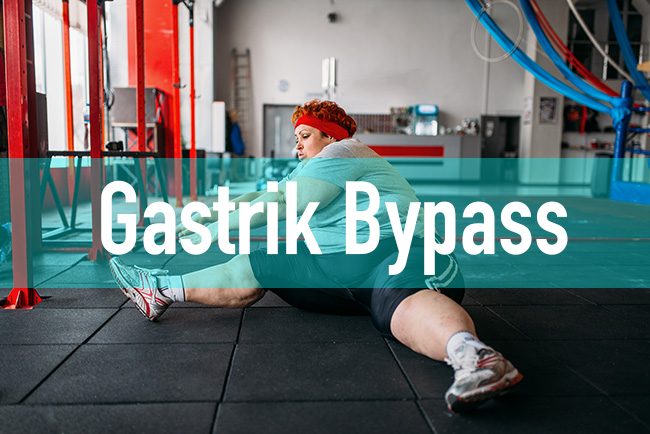# Information Form

Laparoscopic Surgery Baypass Surgery
Bypass means use the shortest path. Gastric Bypass means the passage from the stomach to intestines in general surgery. It is a method used in various diseases that obstruct the output of the stomach. As used in obesity surgery, Gastric Bypass is a surgical method in which the majority of the stomach is disabled and the food taken is digested by using only half of the intestines. it is aimed to remove some of the food without being absorbed. Thus, patients are saturated with less food, and some of the food they take is absorbed.
Laparoscopic Surgery (Minimally invasive surgery)
The healing process of gastric bypass surgery performed with a closed technique is a short and effortless operation. With the help of closed surgery, the healing process of the patient can be shortened and made less painless.
Early mobilization, faster recovery, return to early work and daily activities. (Patients do their daily work in 2-3 days, return to their active work life in 5-7 days, and come to the point where they can drive a car after 10 days.) Less surgical site infections, less surgical site scars and good cosmetic results, more comfortable and minimizing lung complications through deep breathing, less loss of performance in athletes, prevention of surgical hernia, no risk of forgetting foreign bodies in the abdominal cavity.
Open Surgery
Open gastric bypass surgery is performed from a large incision in the abdomen of the patient. The biggest advantage of open surgery is that the surgeon performs the surgery by seeing the tissues. However, the size of the incision causes postoperative pain and affects the time it takes to return to daily activities.
During gastric bypass surgery there are 2 steps:
The first step in gastric bypass surgery is the reduction of the stomach. The upper part of the stomach is divided into two with the lower part being large. The upper part of the stomach (pouch) is where the food will go. This small portion of the stomach is the size of a walnut and contains only 28 grams of the food. Therefore, the patient feels saturated when eating less and weight loss can be facilitated.
The second step is to bypass. By removing a portion of the small intestine from the digestive tract, the absorption path of nutrients is shortened. The first part of the small intestine is bypassed and the second part is connected to the small pouch formed in the stomach. The food is now fed into this new pouch and then into the second part of the small intestine. As a result, a very large portion of the stomach and part of the intestine are removed from the digestive tract after surgery. Thanks to the small stomach, the patient consumes less food and as part of the small intestine is bypassed, the body is intended to absorb fewer calories.
Advantages of Gastric Bypass Surgery
Tube The advantages of gastric surgery are: Preserves vagus nerves. It ensures that all anatomical, neural and physiological functions of the pyloric muscle are not impaired. Endoscopically easily controlled. It ensures that there are no blind parts left behind that cannot be controlled endoscopically. It can be easily rotated laparoscopically. This means that if it is enlarged and deformed, it is possible to easily collapse and re-make the tube stomach again. In addition, it can be easily converted to Duodenal Switch surgery. Gastric bypass contributes significantly to the healing of patients with diabetes. After gastric bypass surgery, it is observed that 80% of the patients have a decrease in cholesterol and the values return to normal in the following periods. The risk of heart disease is reduced.
Obesity-related sleep disorders are observed in order. High blood pressure improves greatly.
Gastric bypass surgery reduces the need for medication in most patients with type 2 diabetes.
Respiratory problems are intended to return to normal. When attention is paid, gastric bypass surgery can lead to permanent weight loss.
New & Used Gastric Bypass, Roux-En-Y (Proximal)
Roux-En-Y (Proximal), also known as the most commonly used bariatric procedure in the USA, is considered to be the most commonly used gastric bypass technique. The small intestine connects to the new stomach pouch. The other small intestine end, through which bile and pancreatic fluids pass, is also connected to the intestines.
Gastric Bypass Roux-En-Y (Distal)
With this method, the part of the small intestine that meets the bile of 6 to 10 meters long is joined to the stomach pouch at least 1 meter further, but this method is not preferred because it can cause vitamin deficiencies and it is not always preferred by insufficient digestion of fat and starch. ideal method.
Loop Gastric Bypass
Although it is not often preferred, it is the only method that is applied directly to the stomach without intestinal division. Due to the high likelihood of bile and pancreatic enzymes disturbing the esophagus and stomach, this method may impair patient comfort.







